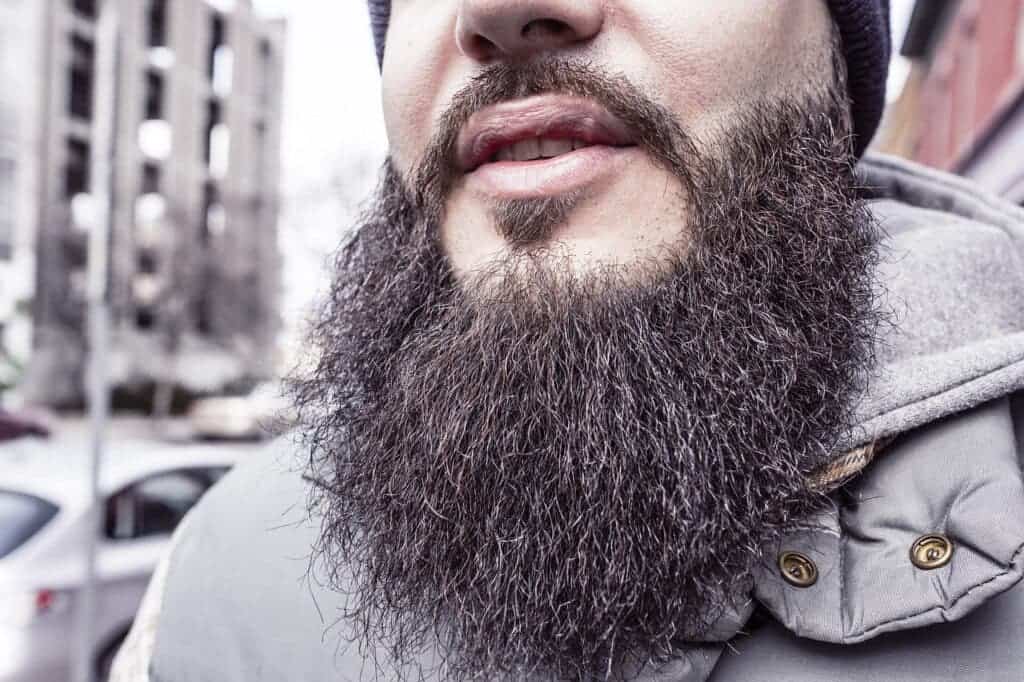
One of the most easily recognizable features of sexual dimorphism in humans is the fact that males grow beards whereas women don’t. But what is the point of having a beard in the first place, evolutionary-speaking?
Do beards make men more attractive?
Whenever there are important physiological differences between males and females of a species, these features are more often than not due to the evolutionary pressure of sexual selection — the process that favors traits that promote mating opportunities.
Charles Darwin proposed the concept of sexual selection 150 years ago in On the Origin of Species by Means of Natural Selection, but his definitive work on sexual selection was undoubtedly covered in ones of his lesser-known works: The Descent of Man, and Selection in Relation to Sex, which was published in 1871. Although Darwin wrote extensively about sexual selection and offered ample evidence to support his thesis, this simple quote from the book illustrates the concept quite clearly:
“We are, however, here concerned only with that kind of selection, which I have called sexual selection. This depends on the advantage which certain individuals have over other individuals of the same sex and species, in exclusive relation to reproduction.”
Essentially, Darwin argued that sexual selection drove variation in traits such as skin and hair color, and also shaped many differences between men and women. According to Darwin, such traits help, not with the struggle for survival (natural selection), but with the struggle for reproduction.
However, determining the effects of sexual selection in humans is very tricky because our behavior is also largely driven by culture. It may be difficult to identify a human complex behavior that is completely independent of culture or social learning. For instance, we dress in fashionable clothes to attract the opposite sex — and fashion always changes with the times and varies depending on the geographical location. Footbinding in ancient China and neck rings in the Kayan are some extreme examples of such behavior.
So what does all of this have to do with beards? Being a defining feature of men, it stands to reason that beards evolved to attract mates. However, studies have been rather inconclusive in this respect.

One 2013 study found that “women judged faces with heavy stubble as most attractive and heavy beards, light stubble and clean-shaven faces as similarly less attractive.” However, a 1996 study reached the opposite conclusion, finding that men with “facial hair were perceived as more aggressive, less appeasing, less attractive, older, and lower on social maturity than clean-shaven faces.”
To complicate things even further, research suggests that in times when beards are fashionable, being clean-shaven is more attractive, while if there are many clean-shaven men, beards become more attractive simply by contrast.
Some women really like beards, while others can’t stand them. There’s no universal preference for beards across the board.
The lack of consistent evidence and the fact that most studies are performed with Westerner participants makes a poor case that men’s beards serve to attract females. However, we’re not out of sexual selection territory yet.
Beards as a signal of dominance for other men rather than an attraction cue for women
Traits favored by sexual selection do not necessarily serve to attract, they can also improve reproductive outcomes by making men appear more dominant, hence more able to fend off competition for mates.
Studies suggest that men with beards are perceived as older, stronger, and more aggressive than those that are clear-shaven.

One interesting study that assessed British facial hair styles between 1842 and 1971 found that beards and moustaches became more fashionable during times when there was a great proportion of single men competing for fewer women.
A 2015 study, which was published in the journal Behavioral Ecology, found that perceptions of men’s dominance increased with features of masculinity (lower-pitched voices and greater beard growth). Beards didn’t appear to affect a man’s attractiveness rating.
“Together, these results suggest that the optimal level of physical masculinity might differ depending on whether the outcome is social dominance or mate attraction. These dual selection pressures might maintain some of the documented variability in male physical and behavioral masculinity that we see today,” the authors wrote.
Beards to soften the punch?

Aside from enhancing traits of dominance (and providing the perfect breeding grounds for bacteria and other germs), beards may also serve a very practical purpose.
A recent study, which was published in April 2020 in the journal Integrative Organismal Biology, suggests that growing a thick beard offers protection for the human jaw from the impact of blunt force.
Previous research suggested that human hands evolved to be used as weapons and the human face is naturally developed to withstand blunt force.
The new study suggests that the beard can also offer men an edge during physical confrontations with other males. The researchers covered a human skull with fiber epoxy composite and grafted a beard made of untrimmed sheepskin.
Their trials found that the faux beard absorbed 37% more energy than hairless models. What’s more, beard-covered skulls broke bones only 45% of the time, compared to hair-free skulls that broke almost all of the time.
“These differences were due in part to a longer time frame of force delivery in the furred samples. These data support the hypothesis that human beards protect vulnerable regions of the facial skeleton from damaging strikes,” the authors wrote.
Bottom line: it’s highly unlikely that beards are some fluke of evolution. Instead, they’re likely the result of evolutionary pressures meant to enforce dominance hierarchies, perhaps enabling some men to intimidate competitors for mates. They may also aid in physical confrontations with other men by softening the impact of blunt force. In the end, unfortunately (or maybe fortunately for you), there is limited evidence that beards make men more attractive.


